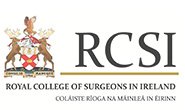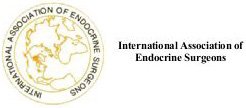Thyroidectomy
There are two types of thyroidectomy:
- Total Thyroidectomy – The total removal of the thyroid gland
- Hemi Thyroidectomy – The partial (one lobe) removal of the thyroid gland
The indications of total thyroidectomy are:
- Thyroid cancer
- Pressure symptoms: in large multinodular goitre where the thyroid gland puts pressure on the trachea, oesophagus, or the nerves.
- Hyperthyroidism: in toxic nodular goitre or in diffuse Grave’s disease where the thyroid gland produce more than necessary of the thyroid hormones. Surgery usually required when the medical treatment fails to achieve a good control of this condition.
- Cosmetic reasons: in unsightly large goitre.
Complications
The thyroid surgery is usually a safe procedure however; there are potential complications from this surgery. The most important ones are (not limited to) the followings:
- Bleeding: Bleeding usually occurs in the first 24 hours of surgery. Immediate removal of the neck sutures by the nurse or house doctor may be required and return to the operating theatre to arrest the bleeding is mandatory and lifesaving sometimes. This can happen in less than 1% of cases.
- Voice change: this is due to injury or bruising of the voice box nerves. The change in the voice can either be temporary (resolves within weeks or months after the surgery) or it may be permanent. The voice changes can either be minor changes or obvious hoarseness of voice. The permanent voice change can happen in 1-2% of cases.
- Change in your calcium level: our calcium level is maintained by four tiny glands which are called (Parathyroid glands). These glands are usually situated behind the thyroid gland however they may vary in their position. Temporary damage to the parathyroid glands can usually happen in around 10% of total thyroidectomy procedures however; permanent damage which will lead to a lifelong requirement of calcium and Vit D supplements can happen in 1-2% of total thyroidectomies only.
There are other complications which can include (not limited to): infection, seroma (fluid collection behind the wound), keloid (over growing scar), and stiffness of the scar. All these complications have a low likelihood occurrence.







